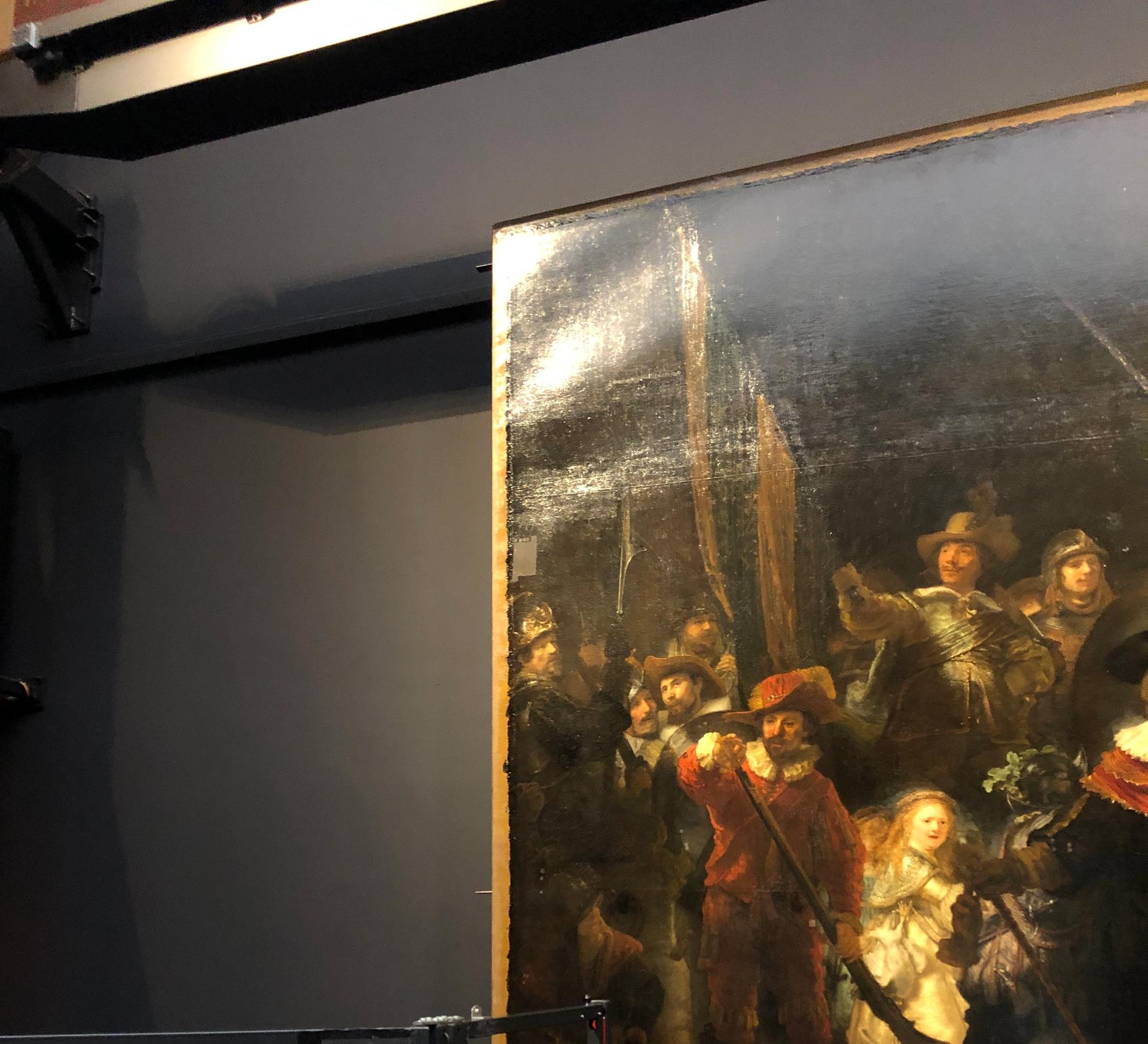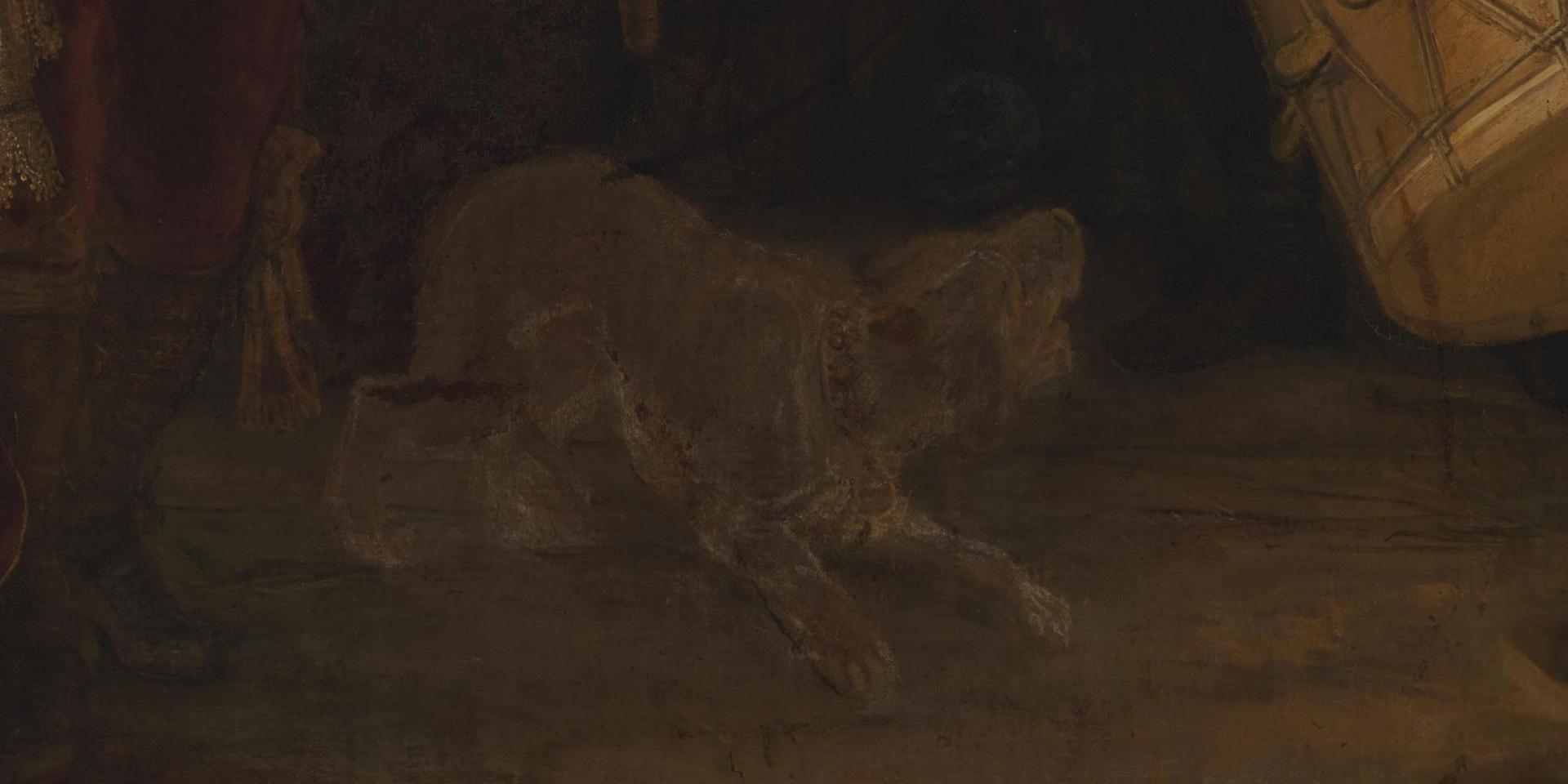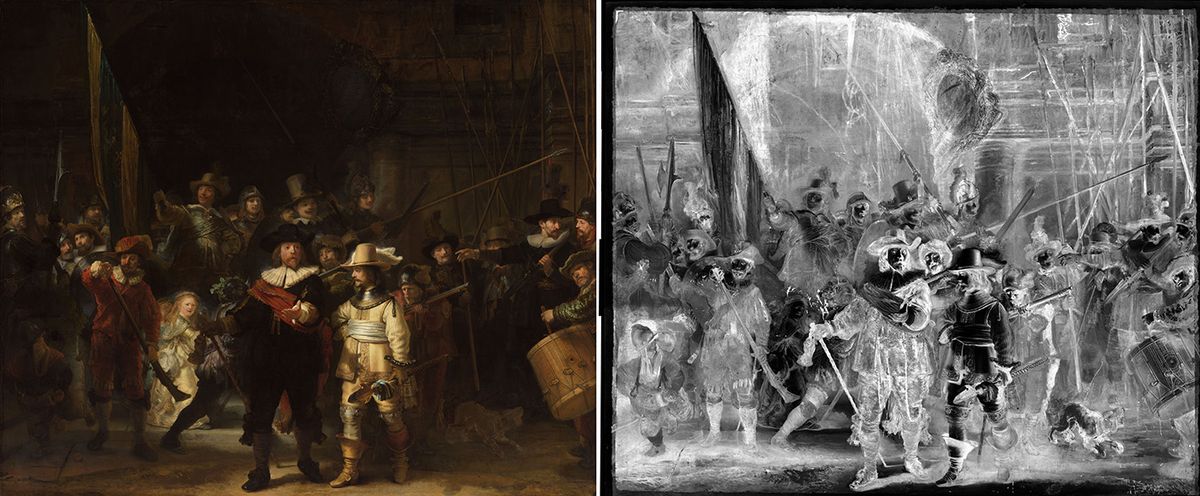Rembrandt’s preliminary sketch forThe Night Watch (1642) has been discovered beneath the surface of the paint, using the latest scientific techniques. Conservators at the Rijksmuseum have also determined the worrying extent of a rippling deformation of the canvas, which was caused when the picture was moved during building work in 2003-13. This will now require urgent treatment.
The Night Watch, the most important painting from the Netherlands, has been investigated by a 30-strong team at the Amsterdam museum during the past two and a half years.
The discovery of Rembrandt’s original painted sketch was announced this morning at the Rijksmuseum. It has long been assumed that the artist must have started with a rough sketch, because of the sheer size of the 4.4m-wide canvas and the complexity of the composition. But no traces of sketching could be seen beneath the paint surface, until the use of the most sophisticated imaging processes.
Taco Dibbits, the Rijksmuseum’s general director, describes the finding of the sketch as a breakthrough: “We have discovered the genesis of The Night Watch.”
The original sketch was made in beige paint, with a high chalk content, and this was revealed through an examination of the calcium content of the pigment, using Macro-XRF imaging.
This showed that the final composition is very similar to the initial sketch, but there are significant alterations which Rembrandt made as he went along. He originally included feathers on the helmet of the militiaman Claes van Cruijsbergen, but later painted them out, possibly because they would have been too distracting in the centre of the composition.
The leg of Rombout Kemp was moved slightly, probably to make it fit in better with those of the adjacent militiaman. Rembrandt initially placed an additional sword between the two central figures, captain Frans Banninck Cocq and lieutenant Willem van Ruytenburgh, but this was removed. There were originally more spears projecting above the group in the upper right.

The deformation of the canvas is clearly visible in the upper left corner of the painting Image: © Rijksmuseum
A disturbing problem that emerged during the research is a deformation of the canvas in the upper-left corner. This rippling developed only relatively recently, after The Night Watch was transferred from its normal position in the Gallery of Honour to the adjacent Phillips Wing during the lengthy restoration of the main building a decade ago. The deformation is a salutary reminder of the problems that can develop when moving such a large painting into a slightly different environment.
Another deterioration is the depiction of the dog at the bottom of the composition, between the central figures and the drum on the right. New research suggests that abrasion in the distant past means that the dog is much lighter than Rembrandt intended.

Rembrandt's depiction of a dog has deteriorated over time Image: © Rijksmuseum
The priority now is to deal with the deformation of the canvas in the upper-left corner. It was announced that work is due to start on 19 January 2022.
The painting will be carefully removed from its 1970s wooden stretcher and attached to a new strainer of a more stable material. This will take up to three months. Decisions will then be taken on a more fundamental conservation of The Night Watch, including the possible removal of old varnish.


